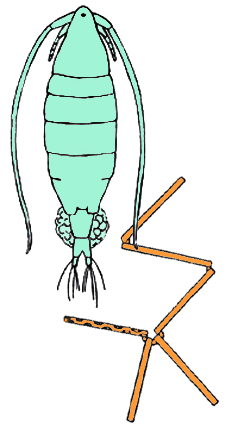I work with and around a lot of toxic materials. This week I went on a detox bender, searching for anything I could do to help rid myself of cooties that might attach to me from Newtown Creek, exposure to marine paints and solvents, 13 years living in Greenpoint, USA, etc.
In addition to an infrared sauna I found two blocks from home and a special “detox blend” they make in-house up at Chopin Chemist, one of the fantastic polska aptekas here, I came across a product made of green algae that is supposed to work wonders.
Chlorella is a genus of single-cell green algae, belonging to the phylum Chlorophyta. It is spherical in shape, about 2 to 10 μm in diameter, and is without flagella. Chlorella contains the green photosynthetic pigments chlorophyll-a and -b in its chloroplast. Through photosynthesis, it multiplies rapidly, requiring only carbon dioxide, water, sunlight, and a small amount of minerals to reproduce. ~Wikipedia

Even a small amount of Chlorella makes an opaque beverage, compared here to lemon and cayenne (with magic Polish detox drops) on the right.
Apparently, at one point in the 40s and 50s, Chlorella was predicted to become the answer to global hunger issues, a perfect superfood to sustain all of humanity. Everyone from the Rockefellers to the Carnegies were wading through ponds of Chlorella, hoping to divine her secret powers and save the world. Those grand plans have fizzled, but it is still widely considered to be a great source of protein and vitamins. It is also suspected that Chlorella can bind with heavy metals in the human body and draw them out via digestion.
Here’s hoping.

© Kate Zidar 2013
“As we continue to tinker with the oceans, more and more reports are predicting that the kinds of seas we’re creating will be conducive to low energy type of animals, like jellyfish and bacteria. And this might be the type of seas were headed for… If we are going to save the world from total jellyfish domination then we’ve got to figure out how the jellyfish predators live their lives, like the mola.”
Tierney Thys
In the early aughts I had a job running education programs at the Lower East Side Ecology Center. I was tasked with interpreting the East River ecosystem, a tidal strait within the NY/NJ Harbor Estuary, for city kids and passersby on the East River Park Esplanade.

Me and the Berthos girls fishing on the East River, circa 2004.
It was a great job. GREAT. And I wanted to keep it. So I went diligently searching for any foundational literature, research historic or ongoing, existing curricula, anything about the East River that I could base my programs on. I was petrified when I found…nothing. For the East River, the only flora and fauna that people seemed to write about were of the forensic variety. Only its sullied reputation preceded it.
I heard about one guy down at Pace University, who had been doing water and plankton sampling on a weekly basis “since 1989 or so” from the South Street Seaport. It was technically the Upper Harbor, but it would have to do.
So I cold called Dr. Michael Levandowsky, and he was kind enough to take me along. He introduced me to the supreme scientific instrument, the Bucket on a Rope. (I went on to require all my classes to repeat after me in unison, “YOU DON’T. LET GO. OF THE ROPE!”) He also showed me the Winkler titration method for measuring Dissolved Oxygen, how to assess salinity with a refractometer, and how to run a plankton tow.

Michael Levandowsky wielding a Bucket on a Rope in The Water Underground video, from Center for Urban Pedagogy.
So when I returned to thinking and writing about plankton a decade later, I thought I would check in with Dr. Levandowsky. Again he was kind enough to take me along.

Michael Levandowsky at the Sackler Institute of Comparative Genomics.
Today he is working, among other places, uptown at the American Museum of Natural History, in the Sackler Institute of Comparative Genomics, where he smashes his poor plankton samples into a slurry of genetic information and runs them into gels that he can read with greater accuracy than the method he’s used for most of his career (morphological identification through a microscope).
On his bench were samples from all over the world, and in the lab were an international crew of colleagues studying various aspects of planktonic – and other – life.
Despite the uptown digs and new fangled genetic analysis, I suspect that the Bucket on a Rope is still integral to the work…





